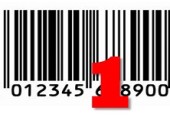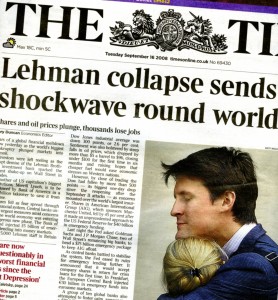After the holidays, Morty was bragging he’d been out to a new, very swanky seafood restaurant. “The maître d’ said they’re planning to bring in seafood barcodes.”
I immediately pictured a slab of fish on Styrofoam with the price barcode sticker on it—straight from my local supermarket. “And this is at a high-end place?” I said skeptically.
“Yeah, but it’s an identifier code, not a price sticker. It’s so the customer can verify they’re getting what they’re paying for,” he said. “Apparently there’s a big push to identify species, and make the information available.”
Talking about fish barcodes reminded me of a recent paper with the intriguing title “Barcodes of Finance.” I contacted Allan Grody, an international expert in the field, for an update on the issue of systematic financial identifiers. I promise: nothing fishy about the following interview!
1. What are the Barcodes of Finance?
It is analogous to the barcodes used by the global manufacturing and retail trades throughout their supply chain. The barcode we see on physical products is a variable linear representation of numbers that are unique codes for each and every product and supply chain participant. The Barcodes of Finance are similar in that every product or participant in finance would have a unique code, although there is no need to physically represent them – the financial supply chain is completely digital.
2. What happened when Lehman Brothers collapsed and the lack of a universal identification scheme became apparent?
Lehman had over 6000 corporate and partnership entities operating collectively as Lehman Brothers. All who interacted with Lehman, regulators as well as everyone who did business with Lehman, needed to understand their risk exposures in its failure. However, there was no consistent identification system for Lehman and its entities. Every computer system that recorded a relationship with Lehman, whether within the many business units of Lehman, or amongst its counterparties, or within its supply chain, used proprietary codes, their own or a vendor’s coding convention for Lehman and its operating entities. Descriptions of the entities associated with these codes, in many cases, did not associate the name “Lehman Brothers” with the entities’ name. No one could identify or aggregate data from its many entities to understand if, in fact, they were doing business with Lehman and what their exposures were.
Prior to this time, I was teaching a graduate course on risk management systems at NYU’s Stern Business School. Data aggregation for risk management was always a problem because of the lack of a universal coding system for computer systems to uniquely, universally and unambiguously identify each product and participant in each financial transaction within each business unit within a firm as well as across the entire financial system’s supply chain. Risk managers, chief executives and their Boards were constantly questioning the data that was represented in their enterprise-wide risk exposure reports.
Lehman (as well all other internationally active financial institutions) had to aggregate disparate transaction data across their many globally active, multiply represented customers transacting in multiple products. These customers, too, were represented differently in Lehman’s systems, as well as other financial institutions’ systems. Regulators, therefore, could not aggregate transaction data to understand each financial institution’s global exposure to Lehman, nor could customers identify their exposures to Lehman.



